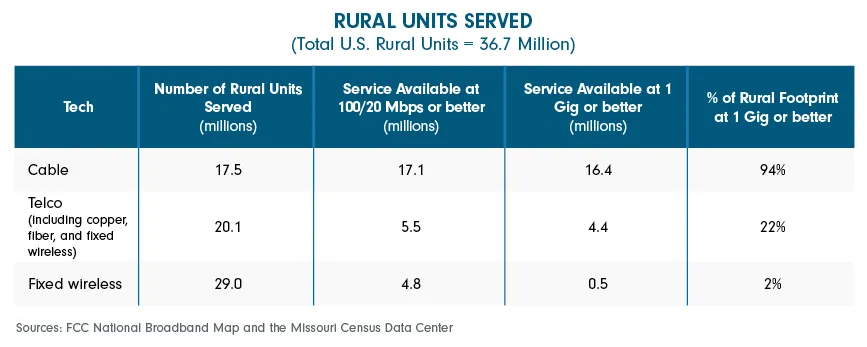The recent release of the updated FCC National Broadband Map means that we are one step closer to the distribution of over $42 billion to close the gaps in our country’s internet coverage. The FCC data not surprisingly reveals that these gaps exist primarily in rural and remote areas of our country.
What the data shows:
- 8.3 million locations (homes and businesses) are “unserved,” which means they don’t have access to internet speeds of at least 25 Mbps downstream/3 Mbps upstream.
- 3.6 million locations are “underserved,” which means they have access to speeds of at least 25 Mbps downstream/3 Mbps upstream, but lack access to speeds of at least 100 Mbps downstream/20 Mbps upstream.
- 7.8 million unserved locations and 3.1 million underserved locations are in rural America.
Building infrastructure in rural areas presents unique challenges, but the FCC data further reveals how America’s cable industry is the leader in delivering superfast networks throughout the rural communities it serves.
FCC data demonstrates cable’s leadership.
- Cable broadband networks are available to 17.5 million rural locations, of which 94% now deliver gigabit speeds.
- Telecom broadband networks are available to 20.1 million rural locations, yet more than half of these have speeds that are below 25/3 and less than a quarter deliver gigabit speeds.
Why? Because cable broadband providers have been investing and upgrading networks throughout their service areas (including rural communities) while telecom networks have lagged in being upgraded despite receiving billions in federal funding to do so.
With unprecedented amounts of money being spent bridging the digital divide, success can best be accomplished by ensuring that funding is open to all providers, instead of limiting it to the “usual suspects.” The FCC data convincingly shows that cable providers have successfully delivered gigabit speeds to rural areas and are now positioned to build next-generation 10G networks to even more rural communities.









